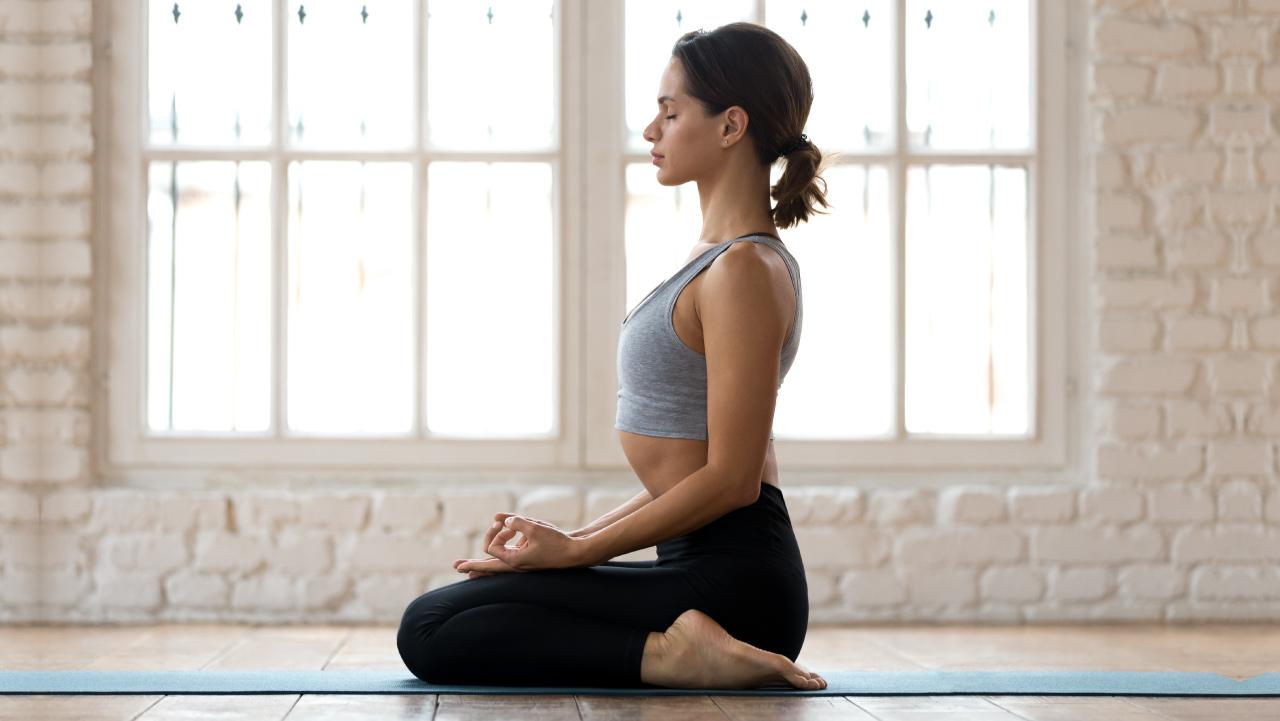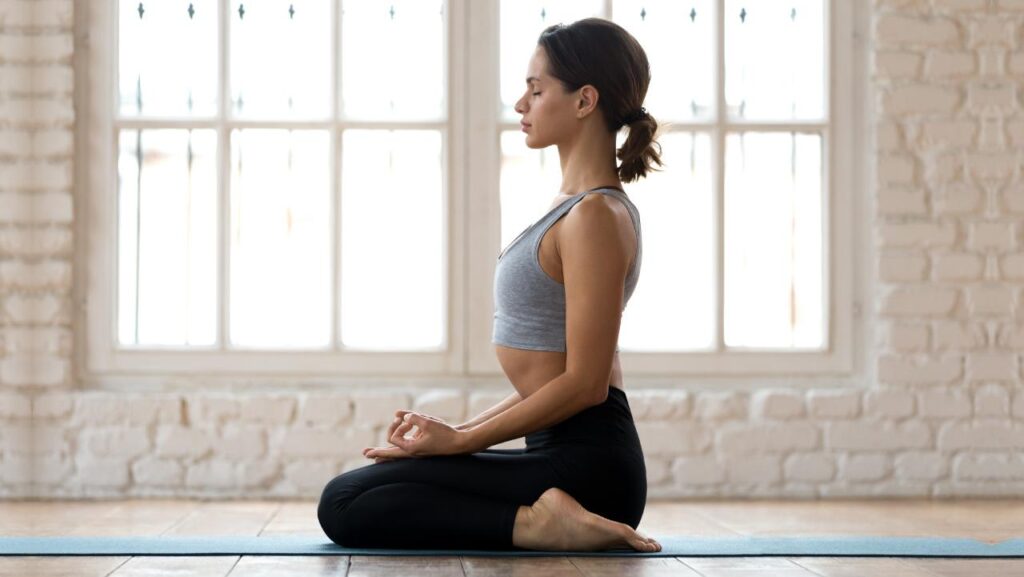



Ancient yoga brings many rewards – physiological, mental, and even emotional. Among the simplest yet most influential poses is Vajrasana Pose, which, according to the yogis, may be called Thunderbolt or Diamond Pose. Such a simple pose of sitting cultivates digestion, relaxes easier, corrects posture, and strengthens the joints. Since the popularity of yoga is given for wholesome health, proper understanding of Vajrasana steps and benefits will be helpful for this posture to allow the practitioners in making the most of it. If you know, Vajrasana is one of those very few yoga poses that can be done after meals. It is therefore unique for healthy digestion purposes. Now that we have answered the question “What is Vajrasana?” let’s look at the health benefits of Vajrasana Pose, its historical significance, how to correctly perform it, and how it may be a meaningful part of your daily regimen.
What is Vajrasana?
Vajrasana Pose, also known as Thunderbolt Pose, is a kneeling yoga posture in which the practitioner sits on the heels while retaining an erect spine. The name “Vajra” in Sanskrit is interpreted to mean “thunderbolt” or “diamond” meaning the strength and solidity developed through practice. Vajrasana is one of the most respected poses simply due to how accessible and inclusive it is in being available to beginners, and at the same time still promising deep, good benefits to advanced practitioners. Be it that you would like to improve your digestion or seek mental serenity, being acquainted with the vajrasana steps and benefits gives you the confidence that you would achieve maximum results from this asana.
Vajrasana Steps and Benefits:
How to Perform the Pose Properly To acquire all the advantages of vajrasana benefits, it is important that you conduct each procedure perfectly and in the proper posture.
1. Kneel Down on the floor: Place your knees and feet close to each other.
2. Sit back on your heels: Let your big toes touch each other as you shift your weight to the soles of your feet.
3. Palms on thighs: Lie your palms on your thighs with your hands facing downwards .
4. Spinal alignment: Sit while keeping a straight back; let your shoulders relax.
5. Close your eyes and breathe in deeply. Imagine very slow, deep breaths.
6. Hold for as long as you can sit still without fidgeting: 5-15 minutes. Gradually increase in time as you build up to it.
Only with proper positioning can you fully take advantage of all the physical and mental benefits of Vajrasana Practice. With this information, you also lower your chances of injuring yourself and increase your potential effectiveness .
History and Culture of Vajrasana
Vajrasana Position has a very rich historical tradition in India, where originally it had been a position for yogis, serving as a pose for meditation, prayer, and fasting. This posture is described in the classical texts of yoga, such as the “Hatha Yoga Pradipika” and the “Yoga Sutras of Patanjali,” where it’s often savored for the sharpening of focus and improving digestion. An analogous seated posture has been credited to mindfulness and mental clarity throughout various cultures. Today, in modern centers, for example Gurgaon, yoga classes prescribe Vajrasana for its restorative use and ease, thus integrating it into the yoga practice worldwide.
Health Benefits of Vajrasana Pose
1. Motivates Digestion
The benefits of Vajrasana include aiding in digestion and many other health benefits. This is a particular yoga pose because it can be performed even after meals and further encourages digestive organs and the rate of metabolism.
– How is that? The kneeling posture is such that, in this position, blood flow in the stomach and intestines increases and provokes the release of digestive enzymes.
-Scientific Glimpse: Studies show that Vajrasana can even eliminate indigestion, bloating, and acid reflux.
-Tip : Perform Vajrasana for 10 minutes after meal to gain digestive benefits from it.
2. Relieves Stress and Anxiety
The good impacts of Vajrasana Pose are not only towards the physical body but also give great intellectual relaxation. Vajrasana practice reduces stress by slow-controlled breathing that soothes the nervous system.
Parasympathetic Nervous System: The parasympathetic nervous system is stimulated to reduce the levels of cortisol. So, through this mechanism, stress is controlled.
Daily Practice Tip: Meditation in Vajrasana practice helps overcome anxiety and stabilizes emotions.
3. Aligns the Spine Proper posture
It is one of the fundamental requirements of healthy spines, and Vajrasana ensures the spines are aligned properly with their consequences that result in strengthening the muscles in the core. In this way due to regular practice of this asana, the body gets accustomed to maintaining a healthy posture in daily life too.
Good for Posture: Vajrasana strengthens muscles around the spine thus minimizing back pain.
Steps and Gains for Posture: Keep your back straight as much as possible, to have an excellent benefit from this asana; do not slouch.
4. Relieves Arthritic Pain
There are many complaints about joint and arthritic knee and ankle pain that have been relieved in patients who have adopted Vajrasana.
– Why it Happens: In Vajrasana, the thighs lying on the ground stretch out the muscles around your knees and ankles and, thereby, increase the flexibility in these joints.
– Caution: If you have painful sharp joint aches, you may use a cushion under your knee for support. Gurgaon yoga classes will teach you modifications to pose the asana safely in case of joint problems.
5. Stimulation of Blood Circulation
Because a well-built body needs good circulation of blood, Vajrasana Pose helps in natural supply of blood by redirecting the flow to the lower abdomen.
– Health Benefit: Regular practice of Vajrasana Pose can help control blood pressure and perhaps does not invite circulatory disorders like varicose veins.
– Practice Tip: Practice pranayama while practicing Vajrasana Pose to have more vibrant circulation and energize yourself.
How to Add Vajrasana in your Daily Life
By doing it the right way, you will easily add Vajrasana in your daily routine. It is only by knowing the vajrasana steps and vajrasana benefits that you will receive the best out of the practice.
Staring slow: First start from 5 minutes and extend them. Using supports: If you feel a little uncomfortable then you can use cushion under your ankle. After food: Vajrasana should be done after eating in the stomach to digest the food.
To Advanced Practitioners
– Practice together with Meditation: Practice Vajrasana in your mindfulness or meditation to reach the ultimate state of relaxation.
– Yoga Classes in Gurgaon: The advanced students will be able to get more perfect technique and build up their endurance through such group exercise sessions.
Common Mistakes to Avoid
To take maximum benefits from Vajrasana Pose, people must be free from common mistakes.
– Slouching: You should sit with your back straight and parallel to the ground. .
– Tension in Shoulders: Try releasing all tensions in your shoulders and neck. .
– Incorrect Knee Position: Your knees must be kept closer together. These mistakes should be corrected for you to benefit entirely from vajrasana.
Who Should Not Do Vajrasana?
Since Vajrasana is basically a safe asana, there are some who should be cautious with it:
Knee Injuries: One employs aids, such as pillows, or seeks a yoga instructor if s/he experiences knee ache.
Recent Surgeries: One steers clear of Vajrasana if a recent surgery had been performed on the abdomen or the joints.
Pregnant Women: One adjusts the asana so that it can be done without discomfort and safely.
Conclusion
Vajrasana is one of the easiest yoga asanas that can be taken by anyone. Provided that there is no condition of fitness, this would give numerous benefits to the body and calm the mind in many ways. It helps in digestion, relaxes the brain, and reduces stress, thereby simultaneously improving one’s posture. There are numerous health benefits of practicing this asana. Understanding the steps and the benefits of vajrasana ensures proper practice and unlocks its full potential. Whether it is an elementary or high-level practice, Vajrasana adds on your daily routine that would bring transformative changes in your wellbeing. For more customized guidance, you can enroll for yoga classes in Gurgaon or in any locality in which you are currently staying. Ex-peer trainers will guide you on how to apply techniques cautiously.
FAQs
1. Can I do Vajrasana after eating?
Yes, it is one of the yogic postures that can even be done after eating to activate the process of food digestion in the abdominal tract .
2. How long should I stay in Vajrasana?
5 minutes initially and then stretch up to 15-20 minutes.
3. Is Vajrasana beneficial for back pain?
Yes, it does make the back muscles stronger and the posture better, which may allay minor backaches.
4. Can Vajrasana help reduce stress?
Yes! The deep breathing the asana induces will activate the relaxation response, reducing stress.
In recent years India has witnessed an increase in demand for online games the main…
Customer engagement and higher conversion rates can win you a lot and you should not…
Speaking from experience, selling custom products can be quite a thrilling and interesting process, but…
Startups have fast-moving natures. Whether from MVP to mobile app scaling, the selection of an…
While choosing a tractor, you need to look into various factors. Models below 40 HP…
A website that performs poorly needs way more improvements compared to the one that performs…
This website uses cookies.